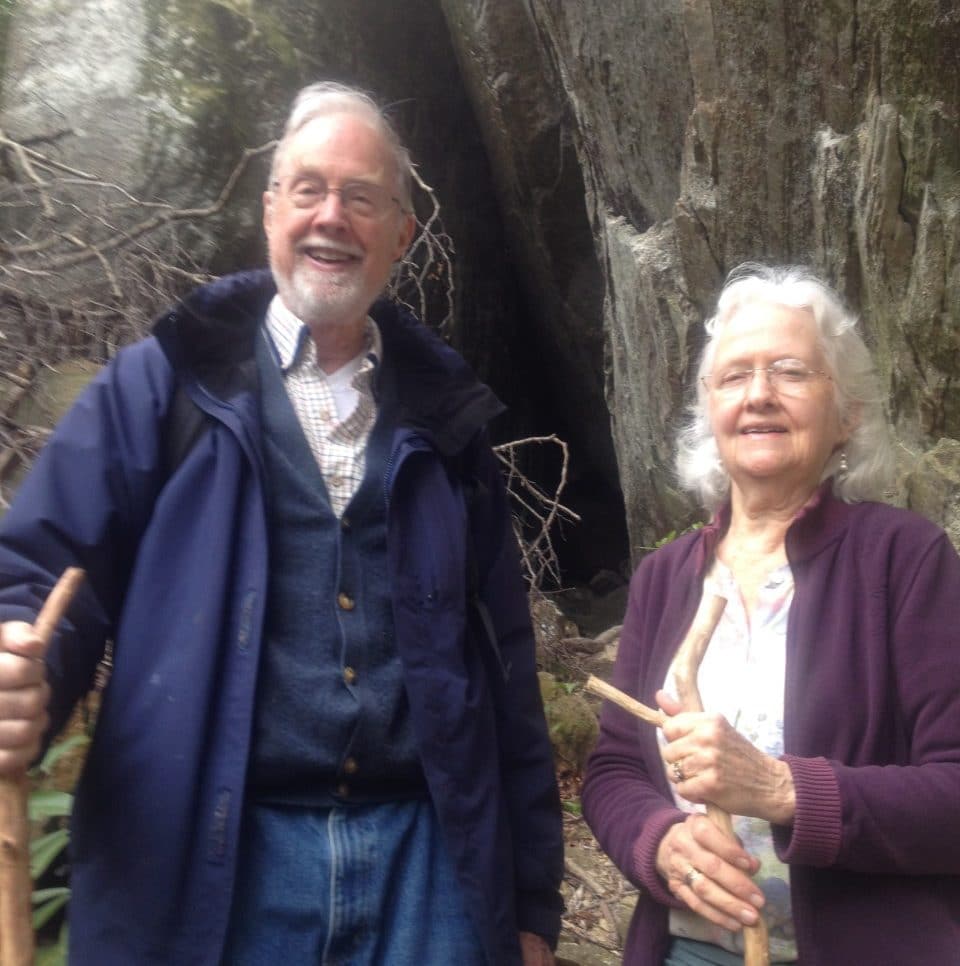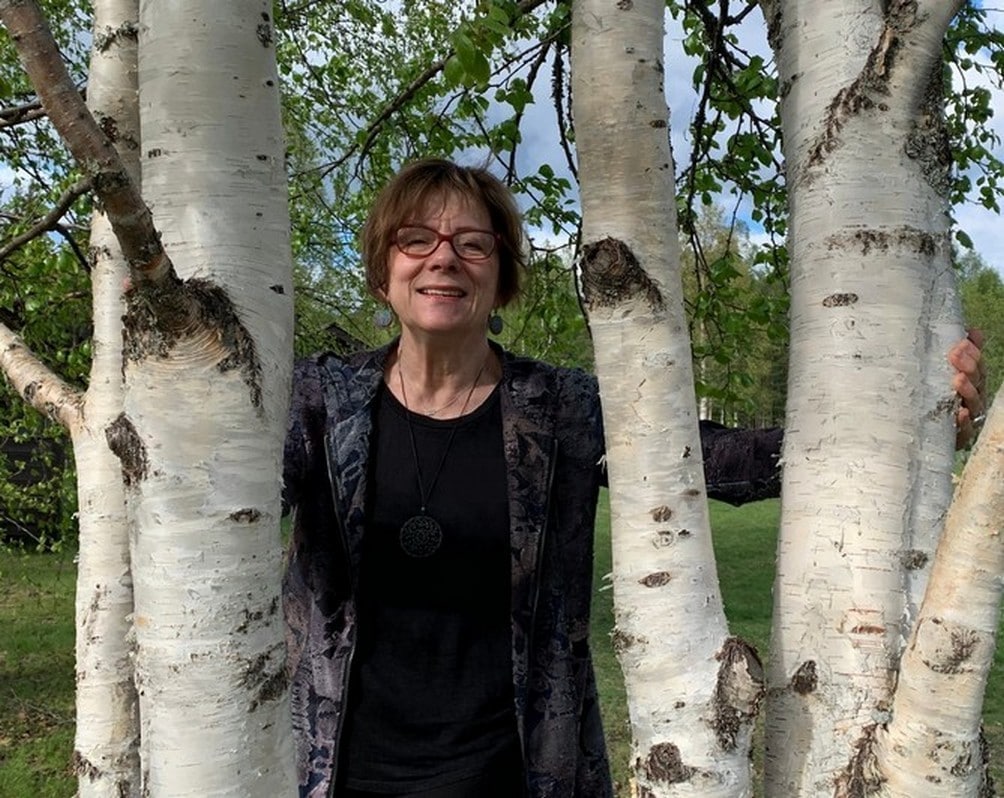Discovery at Transfiguration Preserve

Transfiguration Preserve in Bat Cave is a beautiful, wild place where scientists recently discovered a new salamander. It’s a place where fourth graders learn math and science outdoors. It’s a place where people find healing through forest bathing and nature therapy. And it’s a place where, in the future, a public hiking trail may connect to Chimney Rock State Park.
The preserve got its start when Episcopal nuns with the Sisters of the Transfiguration decided to protect land that they had long maintained as a mountain retreat. The Sisters, who have deep roots providing education to the poor, decided to protect their land as a place for both conservation and learning. In 2017, they conveyed over 400 acres to Conserving Carolina, to form what was originally called the Transfiguration Teaching and Research Reserve. With a new addition, the preserve just grew to more than 500 acres, as the vision for it continues to unfold.
Brother’s and Sister’s Land Brought Together
One resident of the Sisters’ retreat house near the preserve is Dr. Mattie Decker, a mindfulness teacher and retired education professor. Mattie is also an oblate, or a layperson connected with the sisters.
One day at the Episcopal church in Bat Cave, Mattie sat next to somebody new. It was her neighbor, Lew Thatcher. As they talked after the service, they realized they had something in common. Lew is part of the family descended from Bishop Paul Matthews, who first came to Bat Cave in the 1880s. Over the years, this family has protected hundreds of acres in Bat Cave, including the famous bat cave itself. And it was the Bishop’s sister, Mother Mary Eva, who founded the Sisters of the Transfiguration.
So, Lew was part of the brother’s lineage and Mattie was part of the sister’s lineage. And they lived on land that shares a boundary. Looking at the names on the maps, Lew thought, “Really, it’s a family get together.”
Meanwhile, Lew wasn’t able to hike up the steep mountainsides anymore and he had been debating what to do with the land. Imagine, Mattie said, if they could bring the brother’s land and the sister’s land together!
The idea caught on and, last winter, Lew transferred approximately 100 acres to Conserving Carolina to expand the preserve. The now 500+ acre preserve includes rushing waterfalls and dramatic rock outcrops and extends all the way to Chimney Rock State Park. This new addition creates potential for a future hiking trail that could connect with the trail system in the state park.

New Salamander Discovered
Years ago, as the Sisters were considering their decision, biologist Dr. J.J. Apodaca met with them to describe the exceptional diversity of salamanders found on the property, with its mountain streams and rocky slopes. “As an atheist scientist, I felt a little awkward in a room full of nuns,” he says, “but we were able to connect in that this is something larger than our own lives.”
Last year, J.J. was part of a team of scientists who discovered a new species of salamander that lives in only a few spots in the Hickory Nut Gorge—the Hickory Nut Gorge green salamander. Previously, Hickory Nut Gorge greens had been grouped with other green salamanders, but new genetic research shows that they are very much a unique species.
J.J. says that when they made the discovery, “We had to rush to get that news out because it’s not only so different but it’s also in so much trouble.” Surveys show that the population of Hickory Nut Gorge greens has dropped 56% in just 20 years. Their decline is due to a range of issues, but primarily habitat loss and disturbance.
“I’ve always been drawn toward fighting for things that can’t fight for themselves,” J.J. says. “For a lot of salamanders, it’s all about protecting their habitat. For the most imperiled species like the Hickory Nut Gorge green it’s about protecting what’s left.” Among the few places where these rare and beautiful salamanders live are several Conserving Carolina preserves, including Transfiguration Preserve.

The Forest is the Therapist
Transfiguration Preserve is open by reservation to school groups and researchers. Among the groups that have used the preserve for educational activities are Muddy Sneakers, Lake Lure Classical Academy, Warren Wilson College, Wofford College, Bowling Green University, and Conserving Carolina’s Summer of Service.
In addition, the vision for the preserve has also been expanding to include a more personal or spiritual kind of exploration: forest bathing and nature therapy. Following her retirement as a professor, Mattie trained in Norway to become a certified Nature and Forest Therapy Guide. In recent months, she has begun leading forest bathing experiences at Transfiguration Preserve and other properties that Conserving Carolina helped protect, including Laughing Waters and Walnut Creek Preserve.
Mattie says that forest bathing is the practice of mindfulness in the presence of nature. She says, “What that does, when you open up and you know more… you know, it’s endless.” Studies show that forest bathing can bring health benefits such as lower blood pressure, lower stress hormones, and increased immunity. The experience can also lead to a sense of healing that comes from the land itself. Mattie says, “The forest is the therapist and the guide opens the door.”
